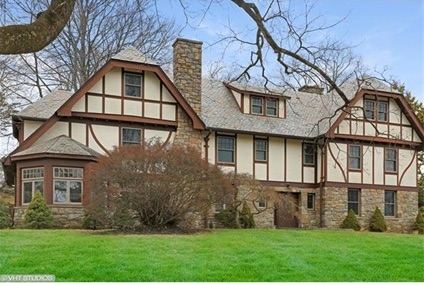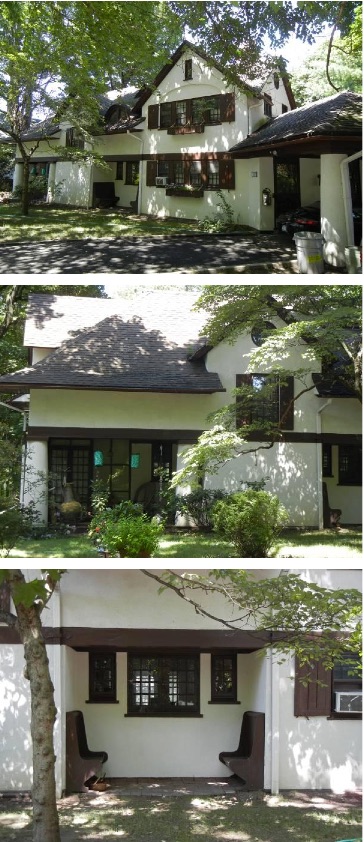Committee for Historic Preservation Denies Demolition Applications for Two Homes
- Wednesday, 22 July 2015 14:04
- Last Updated: Wednesday, 22 July 2015 15:32
- Published: Wednesday, 22 July 2015 14:04
- Joanne Wallenstein
- Hits: 15935
 It's rare that Scarsdale's Committee for Historic Preservation agrees to deny a demolition permit for a home in Scarsdale and even rarer when they vote to preserve two homes at their monthly meeting.
It's rare that Scarsdale's Committee for Historic Preservation agrees to deny a demolition permit for a home in Scarsdale and even rarer when they vote to preserve two homes at their monthly meeting.
The Village's criteria for preservation are strict and as Committee Chair Paul Diamond and William Silverman claimed, under it's new preservation laws, the criteria to preserve homes are even stricter than the criteria set by New York State or the National Register.
Here are the criteria for preservation as set forth in Village code:
In making a determination whether to grant an application for a certificate or to deny such application and require that the building in question be preserved, the Committee shall consider the level of significance in American history, architecture, archeology, engineering and culture present in the building, as well as the integrity of location, design, setting, materials and workmanship, and
(1) That the building is associated with events that have made a significant contribution to broad patterns of Village, regional, state or national history; or
(2) That the building is associated with the life of a person or persons of historical significance; or
(3) That the building is the work of a master and embodies the distinctive characteristics of a type, period or method of construction that possess high artistic values; or
(4) That the building has yielded or may be likely to yield information important in prehistory or history.
B. The Committee may consider if the building is listed on the National Register of Historic Places, New York State Register of Historic Places or Westchester County Inventory of Historic Places. A national, state or county listing alone is not sufficient to warrant preservation.
However at their July 21st meeting, after considerable deliberation, the Committee voted to deny demolition to two homes: the first was a Collett-built Tudor home at 11 Carstensan Road, built in 1925, and the second was an arts and crafts style home at 1023 Post Road that was featured in the Historic Resources Survey.
The application to demolish 11 Carstensan Road was filed by owner Lin Chen Tien and signed by architect Bana Choura who is also a member of the Committee for Historic Preservation.
Tien claimed that the home was not built by Collett and could not be preserved on those grounds, as the Village records erroneously stated the house was built by a different builder; however committee member Alan Steinfeld displayed a copy of the original building permit which showed that the home was built by Walter Collett. The committee then discussed whether or not Collett, who built 300 homes in Scarsdale, could be called a master. Diamond read passages from a letter sent to the committee by neighboring residents on Carstensan who said, "We have lived at 20 Carstensan since 2007. Collett was known for the quality of materials and workmanship....a Collet-built home is a badge of quality, workmanship and architectural significance... the existing house is an example of Collett's work ...The unique beauty of the street is due to so many of his homes in one location. Carstensan Road is the developer's legacy. Cartensan Road is the best example of his work and is a permanent and distinctive imprint on the face of Scarsdale. Collett lived in Scarsdale from 1923-42 built 300 custom homes. His own home was at 2 Carstensan Road. The demolition of 11 Carstensan would be the loss of a distinctive Tudor home."
Tien, the homeowner argued, "He did not design it. And 10 and 12 Carstensan Road were subdivided and built new in the 1990's. The whole street is Tudor style but there are a lot of newer homes."
Diamond then read another letter that said, "The home was designed for attorney William Haines by architect Walther on a street designed by Collett. Collett designed the street to be built as a rambling country lane. If the house were torn down the lot could be subdivided and two homes could be built." Diamond also showed a photo of the home that appeared in a 1931 book about Collett homes.
Diamond recounted a conversation he had with Andrew Dolkart who is the Director of Preservation at the Columbia Architecture School of planning and preservation. Dolkart established Collett as an important local figure and said 11 Carstensan embodies the type of house that was built in Scarsdale at that time.
Village historian Lucas Meyer said, "Given the quality of the construction and the association with Collett I would be against it coming down."
Architect Bana Choura then spoke but when it was revealed that she was the architect who signed the demolition application, she was recused from the conversation and the vote.
Committee member Alan Steinfeld questioned whether or not Collett was a master, but went on to say, "Cartensan Road is the first neighborhood to be completed under Collett's direction. He was an important builder and laid out homes and neighborhoods that gave Scarsdale its character for decades. It should be preserved under the criteria that says, "That the building is associated with events that have made a significant contribution to broad patterns of Village, regional, state or national history." He added, "It is important to maintain the integrity of the street."
Committee member Joyce Hirsch said, "The house contributes to a pattern of history."
Diamond said, "I feel that it should be saved as well. I think Collett is a master based on the criteria."
Barbara Jaffe said, "Though the process of tearing down Carstensan has already begun, Collett exemplifies Scarsdale. His work represents the time and the period."
Bill Silverman said, "If we can't save this house under this criteria than we can't save any houses. We are preserving it because of architectural quality. If we tear this down, the neighborhood will be destroyed. Of all the houses we see this is a very special house. Look at the windows, the stonework ... it is more distinctive than any we have seen this year. I vote to preserve it under criteria one and three. Carstensan the first road to be completed under the organization. Committee member John Cromwell concurred with Silverman.
Associate Village Historian Jonathan Lerner told the committee, that the property was originally a farm with an apple orchard purchased by the Collett Corporation from Lewis Popham. Lerner believed that this also made the property historic.
Builder Bobby Ben Simon then addressed the committee. He said, "I don't think it rises to the level.... You have the highest responsibility here. You are stepping into someone's house. She owns the house. You are not addressing the guidelines.
When you are about to make a decision about someone else's property you better have the highest standards – and you do not have it. You need to think long and hard before you make that decision on someone's property."
Silverman replied, "This is one of the few houses that meet the strict criteria we have been given."
The homeowner also continued to state her case. She said, "Everything you concluded is based on the decision that this was built by Walter Collett. I am going to challenge the authenticity of everything I heard tonight. So how do we put any credential or credibility on that paper? I am going to assemble a team to challenge it."
She then took another approach and argued, "I can't keep it up. You are supposed to consider the economics. It is over 100 years old – it is hard to keep up! The criteria is arbitrary. The committee's interpretation of each criteria is arbitrary."
A motion was made to find the property of historic significance. The committee voted and five members supported preservation on criteria #1 and #3, with one member voting for preservation on criteria #1.
The group then turned to a discussion of two homes on the Post Road. The properties at 1023 and 1025 Post Road were presented by builder Matt Miller. He began with an impassioned speech about his love for Scarsdale and a plea for the Committee to be open minded as demolition of one of the homes had been previously denied.
The house at 1023 Post Road is an arts and crafts style home built in 1910. The home was featured in the Historic Resources Survey of the village completed in 2012. The report notes the stucco home's "homey" features, benches, built-in alcove on the façade, porte cochere, arched dormers and round gable window."
Historian According to Diamond, Dolkart believes the home embodies the period and meets the criteria for historic significance.
In the discussion that followed, Joyce Hirsch noted that since the home is not visible from the Post Road she was not "sure what it added to the community." Silverman said, "Our only job is to apply this limited criteria. This is the most distinctive example of this style of architecture." Bana Choura said, "The placement of the home has nothing to do with it. We have to vote to preserve it. If we don't save this, they are gone."
The owner, Matt Miller objected, saying, "Look at the house – is this the work of a master? Is this a great house? Would you want to move into it? Is it worthy of saving? I am hearing you say this a magnificent house? It's not a nice road!"
The committee then voted and agreed to deny the demolition application.
However, the night was not a total loss for builder Matt Miller who did receive approval to demolish the adjacent property at 1025 Post Road, built in 1907.
The committee also cleared the way for demolition of homes at the following addresses:
- 21 Rectory Lane, Application from Bobby Ben Simon
- 110 Brewster Road – Application from Joe Daniels
- 30 Tunstall Road – Presented by Mary Scott
- 56 Hampton Road – Application from Sarah Kaspers
Diamond told both Tien and Miller that they do have the right to an appeal to the Board of Trustees. So we may not have heard the end of the discussion yet.







